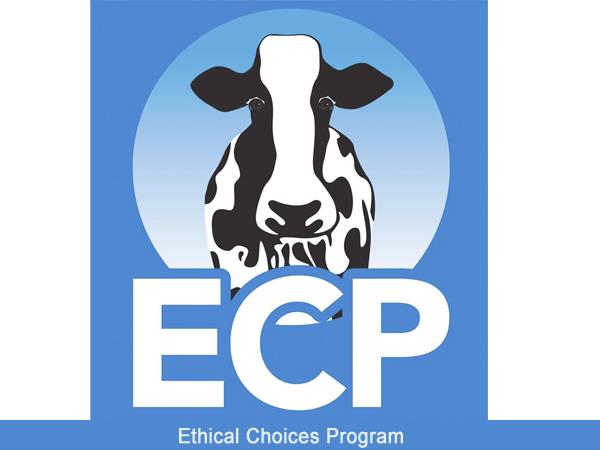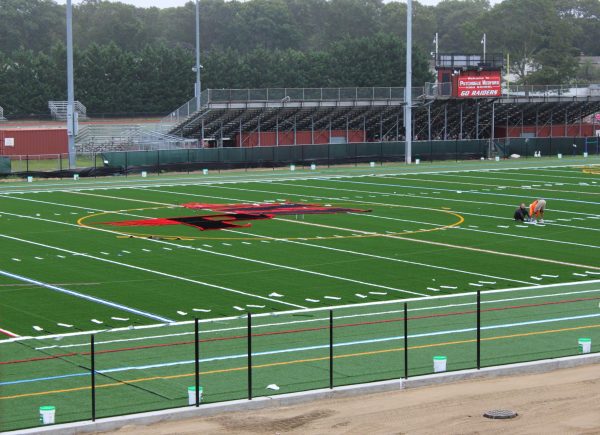An Informative Perspective on the Meat Industry
Casey Clemens, a representative from the Ethical Choices Program, informs AP Human Geography class on the meat industry.

Photo by Creative Commons
A representative from the Ethical Choices Program met with Mr. Buccinna’s AP Human Geography classes to discuss some of the unethical practices still used in the meat packing industry.
The meat packing industry: Oh! the horror. Whether you found out about the atrocities committed by the meat industry from short films on YouTube, educational seminars, or the news, you’d be familiar with the deception and cruelty that is inherently associated with it such as castration and the mutilation of animals and the unsanitary conditions they are compelled to live in.
A few weeks ago in Mr. Buccinna’s AP Human Geography class, Casey Clemens from the Ethical Choices Program– a non-profit organization that focuses on health, the environment, and animals- came to inform us on these such practices and the impact it has on the environment.
The presentation began with some shocking statistics. She asked the class if we knew how often 6 million animals are slaughtered. Some students modestly answered with 1 year, while some others said 1 week. The class was taken by surprise when Casey said that 6 million animals are slaughtered every hour! We were then asked somewhat of a riddle. She wanted to know if we knew which used more water: meat from an entire cow or showering everyday for four months. Again, the class was surprised to learn that it takes more water to process meat from one cow than it does for one human to shower for 4 months.
After the class processed these statistics, we braced ourselves for the next slide of the presentation that revealed the morbid nature of the meat industry. We viewed the cruelty that the animals are forced to endure. Without going into a grotesque amount of detail, a variety of animals- chickens, pigs, cows- were crowded into small spaces, denied the ability to roam free, forced to eat unnatural foods that don’t typically belong in their diet, and had their body parts mutilated.
The video painted the harsh reality of the meat packing industry and some of the ethical concerns that should be considered. This prompted a student to ask if “free range” and “cage free” stickers on products really mean that the animals are being sustained under those conditions. Casey said that technically if a label contains one of those stickers then they are provided those conditions. For example, a product labeled “cage free” means that they chickens or pigs are not in cages.
However, these labels are often deceptive because it doesn’t give the extent to which these animals are actually treated. A label could say “free range” but all that could be is that the animals are given a small, 5 foot by 5 foot, patch of grass to walk on. Likewise, a “cage free” label could still mean that the animals are in factory-like conditions.
Taking this into consideration, Casey shifted the focus to the scientific implications of the meat industry. Whether you agree or disagree with the treatment of animals in this sector of the economy, what can’t be debated are its environmental impacts.
As mentioned, chickens, cows, and pigs are crammed into small spaces, sometimes even kept in cages. Thus, these animals have to defecate where they are sitting. Animal waste contains methane, a toxic gas, that has similar effects to carbon dioxide in regards to global warming. This waste is either kept in the barn where these animals are living or transported to these large sloughs known as waste lagoons.
In these lagoons, the waste is kept for an indefinite amount of time and is extremely toxic to both the animals and the farmers. Sprinklers attached to the lagoons spray water in order to help the lagoons evaporate. As a result, the waste associates with the water and evaporates, presenting methane into the atmosphere.
As a result, livestock has become one of the leading contributors to climate change. With the continuous expansion of livestock farming, it can be inferred that it will become even more detrimental to our environment if serious action isn’t taken.
Casey concluding her presentation on a “What’s Next” consideration. She said that clearly cutting all meat from our diet is not going to be a feasible option in trying to combat the meat industry as people are simply not willingly ready to stop eating meat. However, she did offer some healthier and cleaner alternatives that could be considered.
First, she mentioned that scientists are genetically engineering meat that doesn’t actually come from an animal, but it is grown in a lab using the tissue from an animal. This process doesn’t eliminate the health concerns that come with the overconsumption of meat, but it has the potential of tackling the coarseness of the meat industry.
Second, Casey informed the class on a variety of plant based food options that could substitute your traditional animal based foods. These include items such as ice cream, tofu, and even a plant based burger- the Impossible Burger– which has a decent reputation of mimicking an actual burger. Many different pieces of information were presented, allowing us students to take away our own messages.
If one thing was made apparent, it was this: it clearly isn’t viable for everyone to change to a plant based diet, but with continuing education on the meat industry, it is hopeful that people will make decisions to contribute to a more sustainable environment.

Grade 12
“We keeping moving forward, opening new doors, and doing new things, because we’re curious and curiosity keeps leading us down new paths.”...





